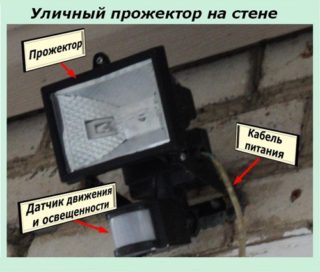Electricity is an integral part of the daily life of modern society. One of the most important aspects of a comfortable stay at home is lighting. To turn on or off the light in the room, you can use a special sensor that reacts to sounds. Recently, such acoustic devices are in great demand, as they make life easier for household members.
- What is a sound sensor for turning on and off lighting
- Types of acoustic sensors for turning on the light
- Purpose of devices
- Principle of operation
- Devices that respond to any noise
- Equipment that responds to commands
- Criterias of choice
- Advantages and disadvantages of the sound sensor for turning on the light
What is a sound sensor for turning on and off lighting
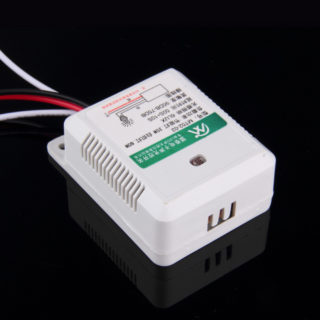
The sensor is a device equipped with a special design with a built-in light bulb. There are modifications in the form of a cartridge, but the most common varieties are in the form of a small box made of plastic.
Reacts to sound signals, thanks to which it is possible to control the lighting in an apartment or a country house. The clap of your hands is most often used as a starting sound signal.
Sound sensors can be programmed for a variety of other sounds, since not everyone is comfortable clapping their hands, for example, hands are often busy or dirty.
The advantage of installing a sound sensor is also in reducing energy costs, since many households are lazy and do not turn off the lights in the room if they are not needed. In addition, moving from room to room will become more comfortable and safe, since you can turn off the lighting devices just before leaving. According to statistics at home, people often get injured due to the switched off lights at night.
Types of acoustic sensors for turning on the light
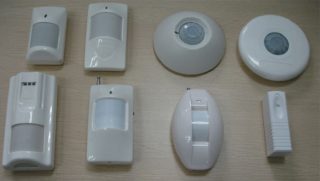
There are several types of sound sensors that are used in a domestic environment.
- Sensor equipped with photocells. It independently monitors the level of illumination in the room in automatic mode and, if necessary, switches off and on the lighting devices by itself.
- Standard audio devices.
- A universal high-frequency sensor that reacts not only to sound waves, but also to human movement in the room.
Each of these varieties has its own technical features, as well as advantages and disadvantages of use.
Before buying a high-frequency sensor, you need to decide what it is for and what goals are set for it. The choice should be considered, since equipping a house with such technologies is not a cheap pleasure.
Purpose of devices

As a rule, such equipment is installed in different rooms for different purposes.
- In rooms where a person appears quite rarely, for example, a pantry, a guest bedroom, etc.
- In warehouses and other industrial premises, where it is not always possible to independently turn on the lighting using a stationary switch.
- Every year, more and more often the "smart room" function is being equipped in office premises, government agencies, large concert halls, etc.
- In summer cottages, in garages, sheds, basements, as well as in places where it is not possible to install an ordinary traditional switch.
There is not always an urgent need to install such technologies at home. But if households want to make their home more comfortable, economical and technologically advanced, there is no better way to find it.
It is recommended to install devices not only due to energy savings and unimpeded movement around the house at night - this approach significantly increases the resources of the lighting fixtures and bulbs.
Principle of operation

According to the principle of operation, acoustic lighting control sensors are divided into two types:
- The device responds to any noise - this is the most common type.
- Equipment that responds to audible commands. The range of such models is small, as a rule, homemade sensors are installed at home.
Devices that respond to any noise
Acoustic sensors are most often installed in corridors or staircases. During movement, a person necessarily makes sounds that are recorded by the sensor. Collaboration with lighting is based on the following principles:
| Option number 1 | Option number 2 |
|
|
The shutdown delay function can be built into the sensor by the manufacturer or added after purchase on its own.
In the first case, the system can also be equipped with a delay function, but not off, but on. This approach allows you to reduce the number of false alarms of lamps, for example, with a short-term noise.
Equipment that responds to commands
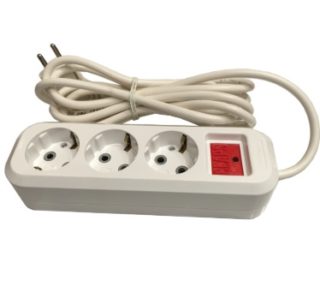
These are louder sounds, such as a distinct hand clap. The working relay of such a device is an ordinary noise relay, only the threshold of its operation is yours and it is divided into two or more commands.
Example: if you clap your hands once - the light is on, clap twice - all the lights are off. It can be installed in residential areas, but it is not always convenient to clap or make any other loud noises in a home with small children.
A technically more complex device can respond to sound commands. For example, how the browser responds to the phrase "Ok Google".
Criterias of choice
- If the equipment is to be installed outdoors, the device must be equipped with an IP protection degree of at least 55, and preferably 65. If the sensor is located under a canopy and moisture will not get on it, it can be limited to protection class 44. If the device is intended for rooms where there is no high humidity and dustiness, the degree of protection can be even less.
- Accounting for the power of lighting devices. When installing a sound sensor, it is also important to choose the right lamp power. It is not difficult to do this, it is enough to find out the power of the main lighting device in the room and select a sensor whose power is with a small margin.
- The radius of action is also of great importance, since this factor allows you to take into account the maximum interval to which it will react. As a rule, this figure ranges from 6-50 meters.For small rooms, you need to choose sensors with minimum performance.
- Equipping a photo relay. Most modern models are additionally equipped with them, since this unit allows you to further reduce energy costs.
Even when buying, you should pay attention to the manufacturer, because often the service life of the device and the correct operation depend on this indicator.
Advantages and disadvantages of the sound sensor for turning on the light
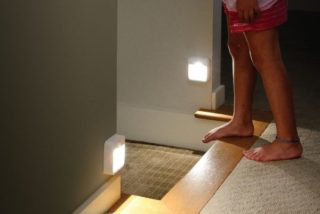
Like any other electrical device, acoustic light sensors have their own advantages and disadvantages. The advantages of the equipment include:
- A tangible reduction in energy costs and the purchase of new lamps, since it has already been scientifically proven that the potential of lighting elements is significantly increased.
- This is not to say that the cost is very low, but families from any category of the population can equip a house with such technologies.
- Large range, which allows you to recognize sounds in advance and turn on lights in a timely manner.
In addition, the light is turned off not immediately after the person leaves, but after 20-30 seconds. This is a significant plus, since a person will not suddenly find himself in pitch darkness.
Among the shortcomings, it should be noted the impossibility of installation in noisy rooms, as well as a large number of false alarms in budget models of acoustic sensors for turning on the light.

